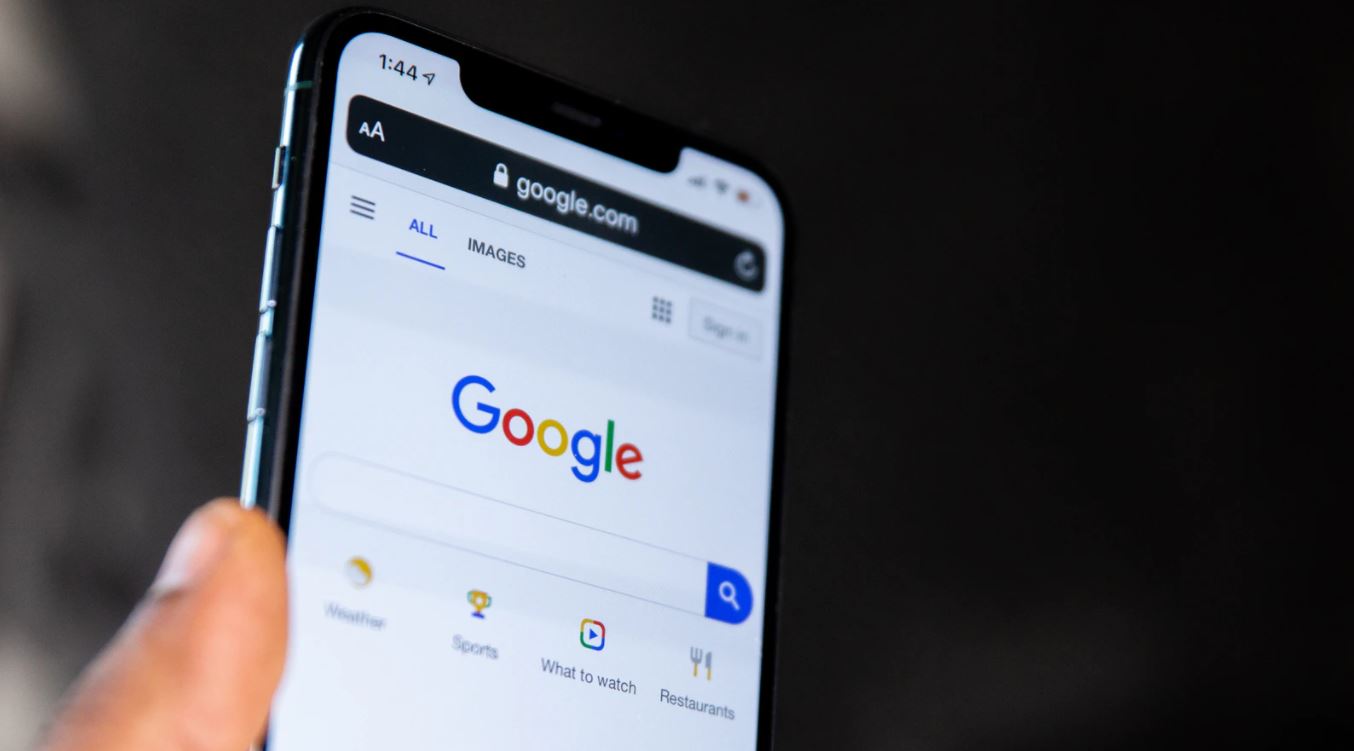I’ll spare you the stale jokes about “unprecedented” times, but as we enter a year since the COVID-19 craziness started, we are still in a position where we’re not always sure what to do next. For most of us, things came to a halt in more ways than one—with our personal lives, maybe our career growth, and definitely our small businesses. This may have included marketing and advertising as we shifted from growth mode to survival mode. Now, the peak of the pandemic has passed and we’re still proceeding with caution—but proceeding nonetheless. And this may mean reactivating strategies that have been put on hold for weeks or months—like your Google Ads campaigns. The good news is, whether you’re starting fresh, reenabling the old, or ramping up the current use of your Google Ads account, we’ve outlined exactly what you need to do to audit your account and reactivate with confidence.

It can feel a bit overwhelming to reinstate strategies in a new world with new priorities and mindsets. Luckily, we’ve got this Google Ads account audit checklist to help you out. Follow the steps listed out below to look at your account with fresh eyes and get your hands dirty (well, metaphorically—you may still want to carry around the hand sanitizer).
Where is your Google Ads account now?
Chances are, you fall into one of three scenarios with regard to your Google Ads account with respect to COVID-19:
- As a last resort during the outbreak, you paused everything. Now, you’re back in your account looking to pick up the pieces. If this sounds like you, then not to worry. The silver lining is that half the work is already done! The campaigns are already built out and you just have to turn them back on in a strategic way.
- On the opposite end, you may have scaled back and are looking to rebuild a more robust campaign structure. This is also an advantage because you have some more recent data still going for you to base your next move off of.
- Or, if you’re just starting out with a totally fresh account then that’s okay too! This way you get to build out the account with a new outlook.
As you can see, regardless of your post-COVID situation, there are positive opportunities in store. In the next section, we’re going to go through a list of boxes to check off to ensure you get the most out of these opportunities.
How to audit your Google Ads account, post-COVID
Okay, so you’re ready to wake your Google Ads account up from its sleepy slumber and start raking in new leads. Not so fast! Let’s walk through the aspects of your account that you should revisit so you can get back up and running properly.
Looking to save time? Our Google Ads Performance Grader conducts a full audit for you in a matter of seconds—free!
1. Adjust your daily budgets
What you’re looking to spend may now differ from what your budgets once were pre-COVID. You may want to take just a minute to review what your spend looked like pre-COVID, during COVID, and now what your spend goals will be going into a post-COVID world.
This means you may need to change your daily budgets if they’re still set to what you had assigned in 2019 or 2020. How do you know what you should set your budgets to now? You can look into resources from Google’s Budget Recommendations, or use a recommended formula based on what your monthly spend expectations are for 2021. Then you can break down how much you’ll have to play with for daily budgets by using the following calculation:
Monthly Budget or Projected Spend divided by 30.4 which is the average number of days in the month= Overall Daily Budget
You can then take that and break it up accordingly depending on which campaigns are priority for you.

2. Evaluate your metrics and set realistic goals
It’s no secret that your performance metrics might look just a little bit different from previous years. This is why it’s helpful to evaluate where you once were in terms of performance and set realistic goals for 2021. Focus this review on what means most to you. For example, if you care about getting the most bang for your buck you may want to take a deep dive into CPA. Or, on the contrary, if you’re to achieve higher brand awareness you may want to refocus your expectations for Impressions or Click Through Rate. When applicable, you can also take a look at Industry Benchmarks to get an idea of where you should be landing in terms of future performance.

3. Make sure your bidding strategies are aligned with current goals
This checkbox seems quick and simple, but is actually one we would consider most important. You’ll want to ensure that your campaigns have a bidding strategy assigned to them that aligns with your current goals and metrics. For example, you don’t want to use a conversion-based strategy like Target CPA if you don’t have recent conversion data for Google to optimize off of.
Or, your previously set Target CPA or Max Clicks Max CPC bid limit may not align with current data. So, you’ll want to keep in mind that certain bidding strategies, like Target CPA, have a minimum historical data requirement in order to use them. If you’re starting out fresh post-COVID with limited data, you may want to default to a manual strategy or a beginner Smart Bidding strategy like Max Clicks. For more help with bidding strategies, check out our post on How to Bid Like a Pro in Google Ads or this review of The Pros and Cons of Every Automated Bidding Strategy in Google.

4. Wait out the Algorithmic Learning Period
Picture your morning routine. You get up, brush your teeth, maybe workout to get the juices flowing, or drink coffee and catch up on the news. All of this is in an effort to come out of your slumber and acclimate to a new day.
Your Google Ads campaigns go through a similar process when resurrecting from hibernation. This process is called the Algorithmic Learning Period. Essentially, Google’s algorithm is always conducting personalized learning for tip-top optimization on each and every account. It takes historical data, combines it with any new changes, and then tries out different methods of serving your ads to get you the best results.

So, if your account was on a bit of a hiatus due to COVID-19, then expect a Learning Period of about a week or two. Especially when making changes to major components like Bid Strategy as mentioned above. Performance might not kick off on a stellar start, but try to wait it out. We always joke here at WordStream that patience is the toughest part of PPC and that rings true when taking the Algorithmic Learning Period into consideration!
5. Check your location targeting
How you choose to set up your campaign’s location targeting will impact both your reach as well as your spend. For example, if you were targeting all of the US before COVID-19 when you had a higher budget, then you may want to now scale it back to just priority states or cities to align with a smaller budget. Essentially, you’ll to restrict or change your targeting based off your new goals and budgets.
6. Pause or add keywords
If there’s one thing I’m constantly telling clients on consulting calls it’s to not be afraid to pause keywords! Think of this as keeping them in your back pocket as you’ll still be able to view the historical data while these words are on pause. In a post-COVID world where every penny counts, you really don’t want to waste a single penny or impression on a keyword that doesn’t mesh well with your current campaign’s theme and metrics. Pause any underperforming keywords and ensure that what you keep are the most relevant to your updated goals. This will help keep your campaigns organized as well as ensuring that your spend is being put towards keywords that you’re confident are going to perform well.
Aside from getting rid of underperforming keywords, you also may want to brainstorm new ones to add in. A more in-depth look at what keywords will work for your fresh post-COVID Google Ads account is found in Google’s Keyword Planner. Unlike Google Trends, the Google Keyword Planner provides a much more granular look at keyword metrics by location. This is a great place to stop into as you reactivate your account so that you can keep your expectations as well as your bids and budgets in line with what the average CPCs are currently at for your top keywords.
This tool aso gives you a snapshot of search volume based on specified locations and timeframes. So, using this hand-in-hand with Google Trends will give you an idea of the current state of search volume as well as Average CPC for your industry’s keywords.

You can also use WordStream’s free keyword tool, which provides similar data but across both Google and Bing.
7. Revisit your ad copy & landing pages
When making a PPC comeback, one thing that can often get left on the back burner is your ad copy. As you reevaluate your PPC goals post-COVID, you may also want to revisit ad copy to check to see that it is up to date and aligns with any new keywords, landing pages, or general branding.
In other words, you don’t want to let a headline appear that mentions a now expired promotion from 2020. Or, if you have a new site then you don’t want an ad to lead folks to an old landing page. This issue is more common than you think and leads to a disapproval called “Destination Mismatch” where you need to have the same cohesive landing page across all ads within one ad group—including paused ads.
So, when reactivating your account, be sure to think back to where you were prior to the pandemic and what has changed since then. Did you come out with a new product to focus your ad copy on? Have you added in new keywords that you’ll want to also fit into your ad copy? Refreshing your ad copy will not only bring things back up to date, but also give your ad viewers something new to look at.

An outdated ad is not a good look for your brand.

Now that’s more like it.
8. Pause underperforming ads, ad groups, or campaigns
Similar to the keywords check-up, you’ll also want to “trim the fat” in your Google Ads account upon reactivating it. Pause any underperforming ads, ad groups, or campaigns. Again, in a post-COVID world you want to make sure your money is being put to good use. That means prioritizing what aspects of your business are the absolute most important to advertise and pausing out any components that aren’t necessary. Or also pausing sections of your account that are spending but not performing. Otherwise, those components will drive up your CPA and continue to make it hard to manage your account as you weed through to get to the top performers.
9. Stay on top of negative keywords
Between Google’s new match type changes and the ever-changing space of searcher intent, there’s a good chance you’ll want to stay on top of your negatives as you reactivate your account. Review the Google Search Terms report to see what queries you’ve shown up for and ensure you have your negative keywords added and up to date. This will help you ensure that you continue to show for the “right” queries and avoid spending on any irrelevant searches.
10. Set up your ad scheduling
Another component that may have changed in your Google Ads account is the days and times that your ads perform the best. With people working from home and so many lifestyle shifts, this is a very real possibility. So, consider setting up an ad schedule to only run ads during peak converting hours as another way to squeeze the most out of your budget.
11. Update your ad extensions
Ad extensions are a great way to build out your ads in line with best practices and continuously push out high-quality ads to the search page. The nice thing is we see folks often setting general or universal ad extensions, so that they can leverage the “set it and forget it” capabilities of them. However, while it’s easy to assign ad extensions and just let them run, the caveat to this is they can easily slip through the cracks and become outdated. When you are auditing your account ask yourself: are your callout and sitelink extensions up to date?

12. Double check your conversion tracking
If you haven’t been dedicating much time to your Google Ads account in a while, then you may want to double check your conversion tracking as well. As your business has changed since the start of COVID-19, you may have new actions to track or a new site that still needs Google Tag Manager tracking tags implemented. For example, maybe this time last year you did not have a chat feature on your site, but since this has risen in popularity you may have added this and want to count people chatting in as a conversion.
You can also hop directly onto your site to ensure the tags are all firing on the right pages using the Google Tag Assistant plugin. Additionally, it never hurts to pop into the Conversions section of Google Ads and double-check the conversions that are currently being tracked. In there, you can see a list of your tracked conversion actions on the left. This way, you can troubleshoot any issues with old or missing conversions to catch incorrect conversion data in its tracks before you go all in with reactivation.

13. Make use of Google Trends
Let’s say you get your account back into top shape to exactly how it once was. But, your performance is suddenly way down compared to where you were at this time last year. Well, it may not be due to anything you did wrong on your end in terms of setup. The reason performance expectations may change as you re-engage your account post-COVID is simply due to searcher interest.
Now this may shock you, but the patterns of popularity in Google searches change constantly. Even more shocking is that consumer priorities and needs have shifted significantly due to the pandemic.
Google Trends is a tool that can show the interest people have in a certain keyword or topic within a particular geographic area. Use it to see if your decline in performance is just due to lowered search volume.
In other words, Google Trends can be a way for Google to say “It’s not you, it’s me” as the rate of searches for a certain topic ebbs and flows.

14. Evaluate your competition with Auction Insights
Whether your account has been paused for a while or you’re currently running it, you can also leverage the Auction Insights section of Google Ads to further evaluate the climate of your specific industry. Auction Insights breaks down who else is on the search results page most often along with you. So, if you’re wondering if new players emerged onto your industry scene since COVID-19 or if you’re curious to see if your archnemesis company is still outbidding you, this is a great place to start.
Auction Insights not only tells you who else is on the SERP alongside you, but also where on the page they fall—whether that’s above (Position Above Rate) or below you (Outranking Share).

15. Review your change history
This is a great time to give yourself a refresher on what your workflows were before and during COVID. Check out Google’s Change History section to see what the last changes you were making in the account were and when they occurred in case you’d like to continue that same pattern. It’s easy to forget routine checkups that were once a habit, so Change History can give you an idea of what was going on in the account in terms of alterations before you go ahead and tweak something that you had decided against in the past. This can also cue you in to any prior trends in your account. For example, if you know you dropped in conversions in the fall of 2020, then you can set your date to that timeframe and see what changes were made that may have caused that downturn.
Audit and reactivate your Google Ads account with confidence
Whether you paused, scaled back, or are starting entirely fresh, there are wins to be had with reactivating your Google Ads account after the peak of the pandemic. Let’s review the steps we’ve covered in this post:
- Adjust your daily budgets
- Evaluate your metrics and set realistic goals
- Make sure your bidding strategies are aligned with current goals
- Wait out the Algorithmic Learning Period
- Check your location targeting
- Pause or add keywords
- Revisit your ad copy & landing pages
- Pause underperforming ads, ad groups, or campaigns
- Stay on top of negative keywords
- Set up your ad scheduling
- Update your ad extensions
- Double-check your conversion tracking
- Make use of Google Trends
- Evaluate your competition with Auction Insights
- Review your change history





Leave A Reply